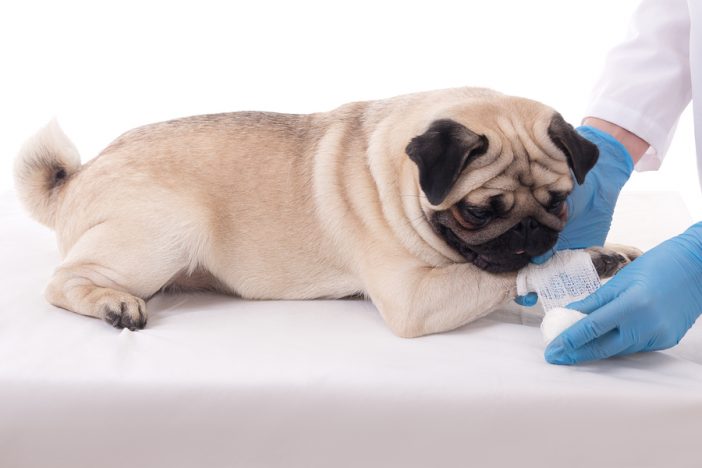
It starts early. At least it did for me. I had decided to be a veterinarian when I was very young. Before I understood anything about money or the fact that the reason you work is related to making an income. Even once I got into veterinary school, I was incredibly naïve. It wasn’t until well into my second year of veterinary school that I even had the faintest idea about how much a veterinarian makes. I heard some fourth years talking about their contracts for their first jobs. One of them was going to be making $45,000 a year. It was 1994, but still, I thought it sounded like a lot of money. I thought wrong.
Most veterinary students are also blissfully unaware of the cost of veterinary school. Because the training to be a physician is relatively similar to the training of a veterinarian, the cost of training a veterinarian is also similar. The only problem is that once you graduate, the salary of a veterinarian is a fraction of that of a physician. I was somewhat shielded from this as I graduated in 1996 from a Canadian veterinary school. However, I still managed to rack up about $40,000 in student debt during university, which I only just managed to pay off. (I kept trying to get loan forgiveness as I was really sorry, but I was never forgiven.)
The Debt and the Graduate
Now it is relatively common for American veterinary students to graduate with $200,000 in student debt. This is a tragedy. This problem is further compounded by the off-shore veterinary school industry (yes, it is an industry) which then serves to overproduce veterinarians, which drives their salaries down. Academic institutions are complicit in this quiet crisis, as they admit off-shore veterinary students into their programs for their clinical year for a huge tuition (around $50,000). This hit of money is a significant source of income for veterinary colleges. Now they are addicted to the money and they can’t stop. In fact, they want more.
This bad economy continues once veterinarians graduate. They have little to no training in business and many of them have a short or long term goal of starting or buying in to a business. When I was in veterinary school, there were zero courses in business, human resource management and communication. Most veterinarians will run a business, have to manage human resources and will need excellent communication skills. Things have improved a bit, for at least now there is some awareness that a veterinary practice is actually a business and (maybe), an academic veterinary hospital is too.

I can clearly remember in veterinary school having no idea what bandage material costs. We wanted to put bandages on for free because the material was just sitting on the shelf (so it must be free or almost free) and the owner should not have to pay for our skill in placing a bandage or our time in assessing a wound. Also, we should feel really bad about charging them for it.
Cost and Care: Finding the Sweet Spot
Once practicing, the real struggle begins. We want to practice the best quality medicine possible. Our clients also demand this from us. The best quality of medicine at the lowest possible cost. If the cost is too high, we are heartless, money-grubbing veterinarians who don’t care about animals. If the quality of the care is too low, we lack skill and competence.
We strive for the sweet spot where the quality of medicine is good enough and the cost is not too high, but usually the differential between the quality and cost is filled in with our margins (which is our salaries and our technicians’ salaries), our time (we donate a large amount of time for free), and sometimes the quality (which creates guilt because we always want to do better for our patients). Over time, this will serve to devalue our skills and services and create guilt for charging too much. This leads to some of the negative feelings we have about ourselves and our profession. It is hard to be a pretend-MD.
The best example of this is the dilemma of overnight care in general practice. Most general practices do not have staff to care for patients overnight. With the advent of emergency clinics in cities during the late nineties, some of this burden has been relieved by transferring sick patients for overnight care. However, shuttling sick patients back and forth to emergency hospitals is far from ideal.

Then there are the patients that are not sick, like the healthy dog spay. This is a young healthy dog, who also just had a major abdominal surgery and general anesthesia. Some clinics will send these dogs home that night, because at least someone is there to watch them. This is probably the better choice, but this usually results in a rough night for both the dog and the owner.
The other option is to keep them overnight for “monitoring” but there is no one there to “monitor” them. They are in a cage alone with no one in the clinic. Sometimes a night technician will come in once to check patients, but usually there is no one there for 8-12 hours. When clients discover this, they are horrified that no one is there overnight, and maybe rightfully so, but most dog spays are performed well under the actual cost of the procedure. Bringing in 24-hour care would drive the costs up, to the point that it would be more than the market would bear. This is a huge dilemma. No veterinarian feels good about leaving their patients alone at night, but often there are no other options.
That is the problem, veterinary medicine in general is more than the market will bear. We can’t afford the education or the care that our patients and clients ask of us and that we ask of ourselves. We need to work on rectifying this disparity, and educating our clients on the real costs of medical care.